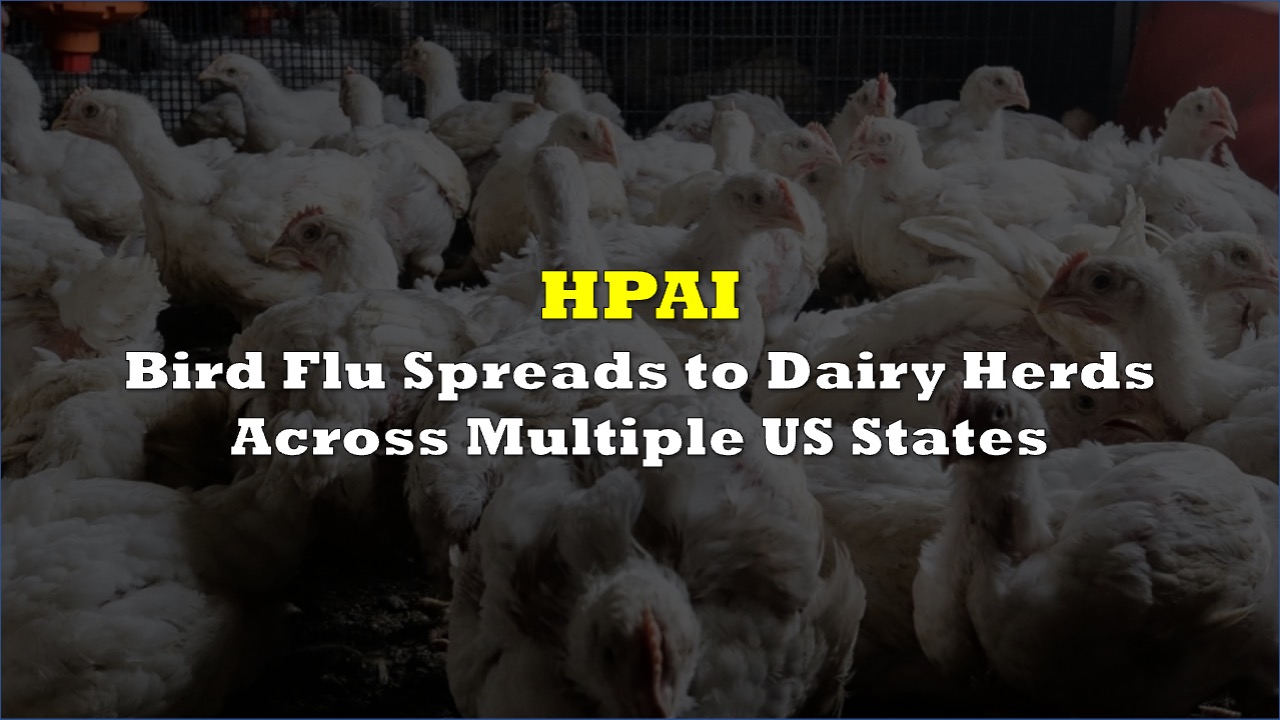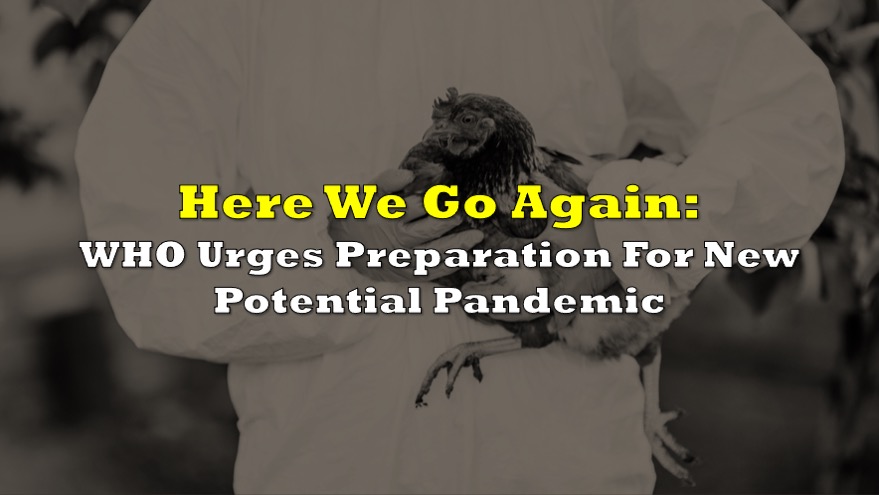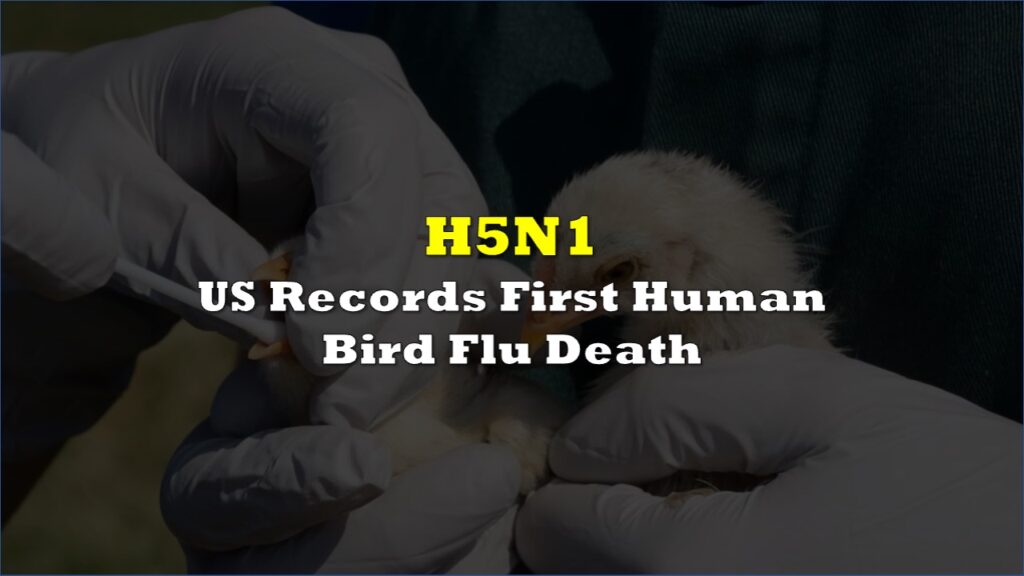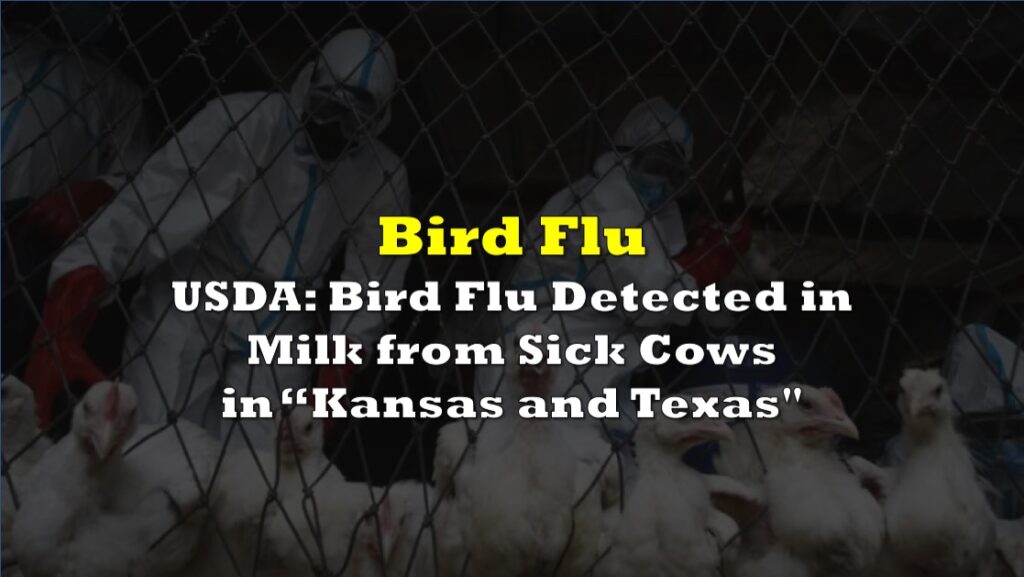The United States is facing an expanding outbreak of highly pathogenic avian influenza (HPAI), or bird flu, as the virus has now been detected in dairy herds across six states.
The US Department of Agriculture (USDA) has confirmed bird flu infections in dairy herds across Texas, Kansas, New Mexico, Ohio, Idaho, and Michigan. The initial cases were first reported in Texas and Kansas on March 25, with the virus then detected in additional herds in the following weeks.
Bird flu outbreaks have been reported at 2 more dairy farms, in Kansas and New Mexico, raising the total to 15 pic.twitter.com/Jut5VICChP
— BNO News (@BNOFeed) April 4, 2024
The infected dairy herd in Ohio had received cows from a Texas dairy that had previously confirmed a bird flu detection. This suggests the virus may have spread between the herds through the movement of livestock.
USDA says it's also investigating new bird flu cases in cows from Kansas, New Mexico and Texas. This suggests the number of confirmed outbreaks in cattle (12) will likely rise over the next few days.
— BNO News (@BNOFeed) April 3, 2024
While the initial cases in Texas and Kansas appear to have been introduced by wild birds, the similar strain of the virus found in subsequent cases in other states indicates a potential for transmission between dairy cows as well. The USDA has acknowledged that the possibility of cow-to-cow transmission cannot be ruled out.
Related: Another Egg Crisis? Cal-Maine Halts Operations in One Texas Facility Due to Bird Flu
The widening geographic reach of the outbreak and the spread to an increasing number of species, including dairy cows, have heightened concerns about the potential risk to human health. This concern was further underscored when a farm worker in Texas tested positive for the virus, albeit with only mild eye inflammation as a symptom.
The World Organization for Animal Health has warned that the current situation has raised the risks of humans being infected with the bird flu virus. However, the US Centers for Disease Control and Prevention still considers the overall risk to humans to be low.
Is it killing off the penguins, too?
Thousands of penguins found dead on island in Antarctica, researchers investigating whether H5N1 bird flu is involved – Reuters
— BNO News (@BNOFeed) April 5, 2024
Meanwhile, researchers are also investigating the devastating impact of bird flu on penguin populations in Antarctica, according to a report from Reuters. A recent scientific expedition found at least 532 dead Adelie penguins, with thousands more believed to have succumbed to the virus. While the field tests were inconclusive, scientists suspect the deadly H5N1 strain of bird flu is to blame.
The spread of the highly contagious virus to the remote southern continent has raised concerns about its potential impact on threatened species of penguins and other wildlife. Scientists fear that the H5N1 influenza could decimate already vulnerable penguin populations, further exacerbating the threats posed by climate change and other environmental stresses.
The discovery of the virus in skua seabirds, which feed on penguin eggs and chicks, has added to the worries about the potential for the disease to spread rapidly through the Antarctic ecosystem. With around 20 million pairs of penguins breeding in the region each year, the threat to these iconic species is particularly alarming.
Information for this story was found via the sources and companies mentioned. The author has no securities or affiliations related to the organizations discussed. Not a recommendation to buy or sell. Always do additional research and consult a professional before purchasing a security. The author holds no licenses.









